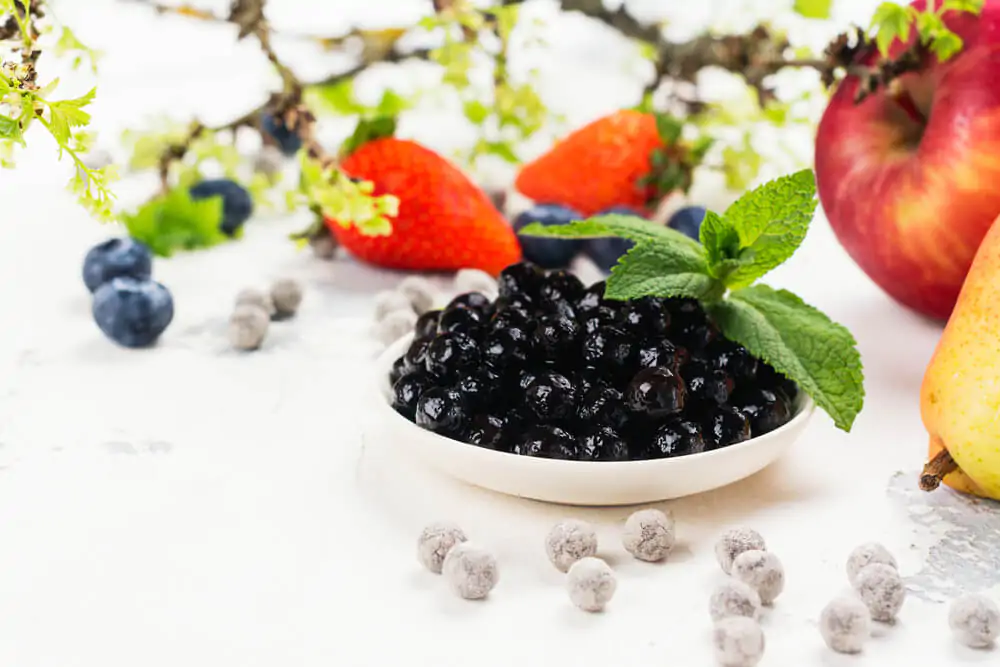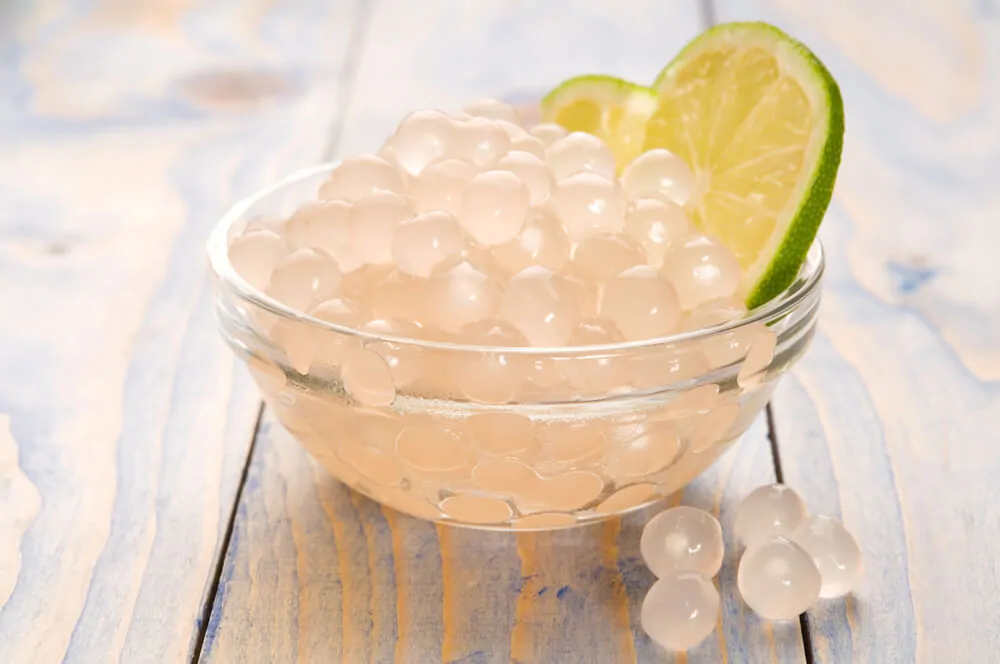Have you been wondering what are tapioca pearls in bubble tea made of? This article discusses what exactly is at the bottom of your drink.

Bubble tea, otherwise known as boba, has taken the U.S. by storm. It originated in Taiwan in the 1980s. How it came about is up for debate, there are a few stories about its origin.
Its popularity isn’t up for debate, though. Bubble tea shops are popping up everywhere, allowing consumers endless tasty varieties of their new favorite beverage.
Bubble tea is served exclusively in plastic cups, which allows its unique feature to stand out – balls at the bottom of your cup. Although most often black, you may also see clear or colored varieties. They offer a chewy addition to your drink.
But what are they? Read on to learn about what tapioca pearls are made of and all the different options you can try!
What Are Tapioca Pearls In Bubble Tea Made Of?

In a nutshell, tapioca pearls get formed from tapioca starch, guar gum, and potentially some additives, depending on the brand. Tapioca starch is, itself, derived from a root vegetable called cassava.
A tubular root vegetable, cassava is commonly found in several different cuisines. This starchy veggie is delicious when eaten alone and functions very well as a stand-alone flour.
Cassava is also the source of the starch known as tapioca. Tapioca is naturally gluten-free and is a common addition to many gluten-free baked goods.
Nutritionally, cassava is rich in Vitamin C, iron, and niacin. But, once reduced to tapioca starch, some of the nutritional value is lost. However, it does remain a good source of iron and calcium.
Are All Tapioca Pearls The Same?

Most tapioca pearls you’ve seen are likely large balls that require a special straw to suck them up. While large pearls are the most common size, they are not the only size available. They do come much smaller as well. Even as tiny as pea-size!
Tapioca pearls are naturally clear when first made. However, the color gets added at a later stage. One of the ways this color change happens is by soaking the pearls in a sweetener of some sort. Often, brown sugar or honey is the base.
Depending on what sweetener gets added, the color of the pearls will change. This can happen earlier in the processing stage or through being soaked in flavoring later.
Black pearls are the most common color found at the bottom of your cup. They stand in beautiful, stark contrast to the colorful teas. They derive their color from being soaked for a long time in one of two things, brown sugar or caramel coloring.
The tapioca pearls can also be flavored with syrup, giving your drink even more of a punch. Some popular flavorings for the pearls are honey, watermelon, strawberry, and orange. Depending on which flavor you choose to add to your pearls, their color may change.
Though not as common as black pearls, clear and red pearls also make a regular appearance in bubble tea.
How Do They Get Their Texture?
Though soft and chewy in your drink, this is not how they start. For the correct texture, the pearls must first go through a softening process. This softening process happens through boiling.
A word of caution: if you are trying to make bubble tea at home, make sure you use boiling water. The pearls do not respond well to cold water.
Due to the nature of tapioca, the pearls will respond to both hot and cold temperatures. If you love softer pearls, try your bubble tea hot. If you like bubble tea, you might also be interested in learning if you can get a caramel frappuccino without coffee.
